Built in 1853 on the site of the Peterloo Massacre to serve as a public hall for political campaigns, bombed and destroyed in the Manchester Blitz, then rebuilt as a concert venue, closed, abandoned, and today a hotel owned by the Radisson company.
This is the story of the Free Trade Hall in a nutshell. It safe to say that this building has definitely seen dark days. However, it somehow managed to survive and still be here, standing proudly, not just as a historical monument, but also as one of the most important pieces of English architecture.
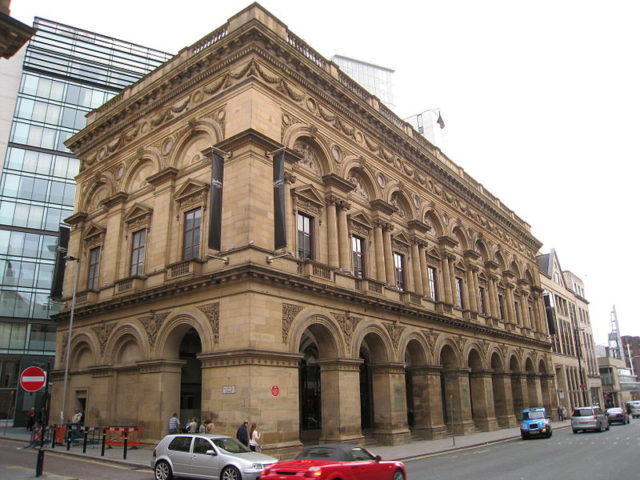
In a way, the story of the Free Trade Hall is a story of death and resurrection, rebuilt several times throughout the course of it’s history and saved from extinction, which allowed for the building’s heritage to remain intact all these years.
The hall’s construction commenced in 1853 and lasted till 1856. The funding was provided through public contributions and Richard Cobden, manufacturer and a radical statesman, supplied the land. It was the precise location of the infamous Peterloo Massacre that took place on 16 August 1819. On this day, a crowd of almost 60,000 protesters demanding parliamentary reformation gathered at St Peter’s Field was charged by the cavalry, on the order of local magistrates. In the ensuing chaos, 15 people got killed and 700 more injured.
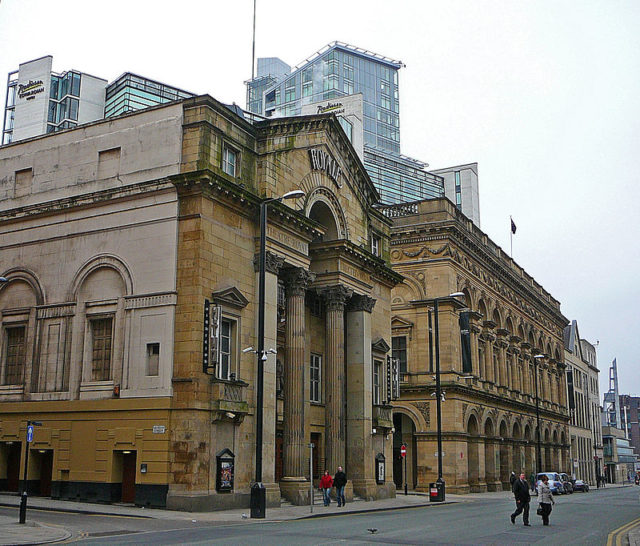
The Free Trade Hall wasn’t the first building to occupy this site. First, there was a large wooden pavilion built in 1840 by the Anti-Corn Law League, which two years later was replaced with a rugged brick structure. All of the public meetings and campaigns that were held in these 2 establishments played a crucial part in the abolishment of the Corn Laws in 1846.
After this huge victory, the citizens felt empowered and demanded that an entirely new building should be erected as a memorial that will serve as a reminder for the people of Manchester of the great battle and ultimate win over the establishment.
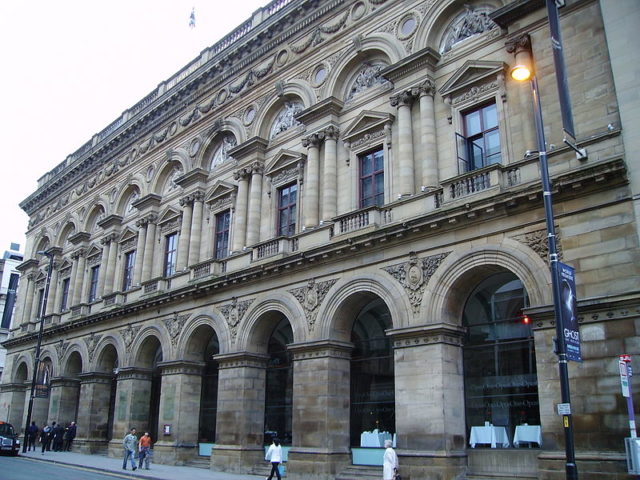
The man in charge of the building’s architectural design was Edward Walters, who chose the Italian Palazzo style for the overall look of the hall, consisting of two floors, concealed roof and a nine bay façade, beautifully decorated with carved figures.
The Free Trade Hall very quickly became to be the center of Manchester’s public life. Numerous events, meetings, and political speeches were held in this venue. In 1858, the famous Hallé Orchestra chose the place as their new home, thus also transforming the place into a concert hall. And probably the most historic moment that happened here is the speech that Winston Churchill gave in 1904, defending Britain’s policy of free trade, which is considered by historians to be one of the most important and powerful he ever gave.
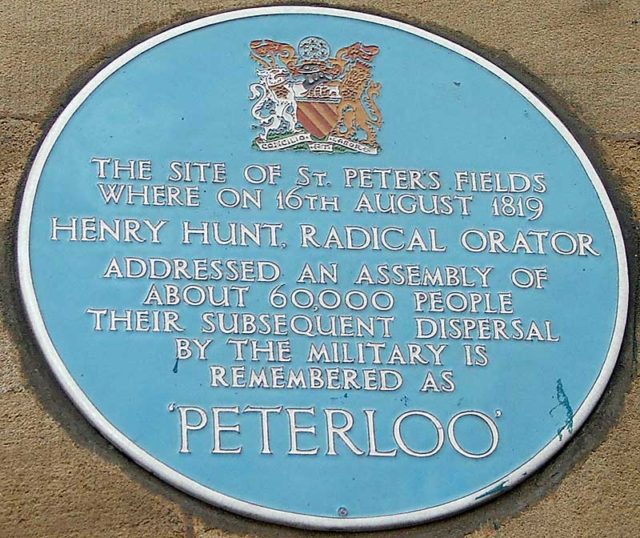
But during World War II, when the city of Manchester was attacked by air raids, an event that is now known as the Manchester Blitz, the Free Trade Hall was one of the many buildings that suffered bomb damage.
Severely damaged, it went through serious reconstruction, led by architect L.C. Howitt. The grand reopening happened in 1951, and the Queen of England was there to honor the event.
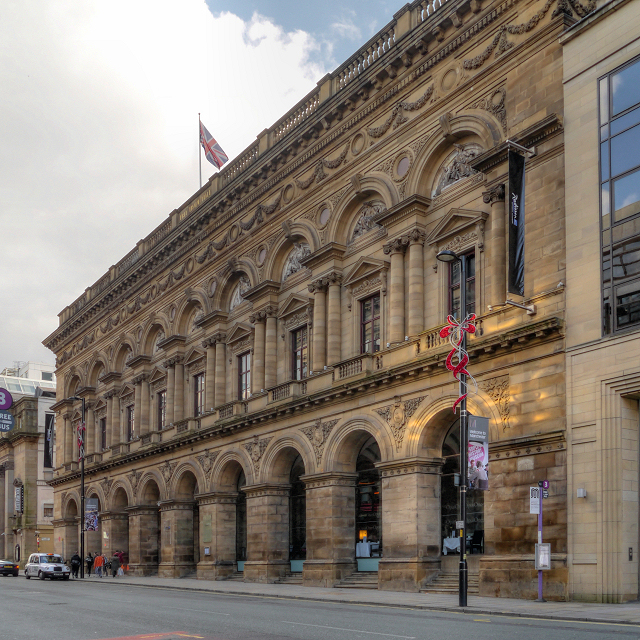
The Free Trade Hall had been transformed to be a grand concert hall and for many years, countless concerts from classical to pop and rock were held here. And especially because of the rock bands, the Free Trade Hall got to cement its place in history. Artists and bands like Bob Dylan, Pink Floyd, Sex Pistols and the Rolling Stones, all of them performed here at least once.
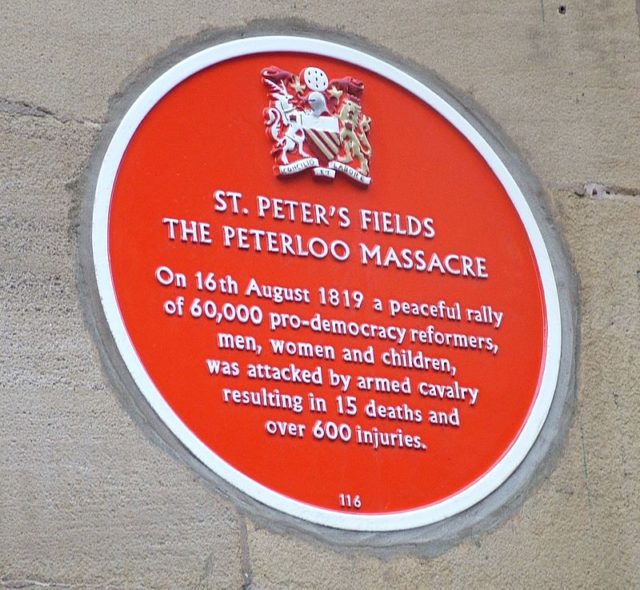
But, in 1997, after the Hallé moved to Bridgewater Hall, the Manchester City Council decided to sell the hall to private developers. This step was met with great resistance, especially from the Manchester Civic Society who considered the Council’s step inept and disrespectful toward the historical importance of the building. The Secretary of State also came to their defense, rejecting all of the applications that differed from the hall’s original look.
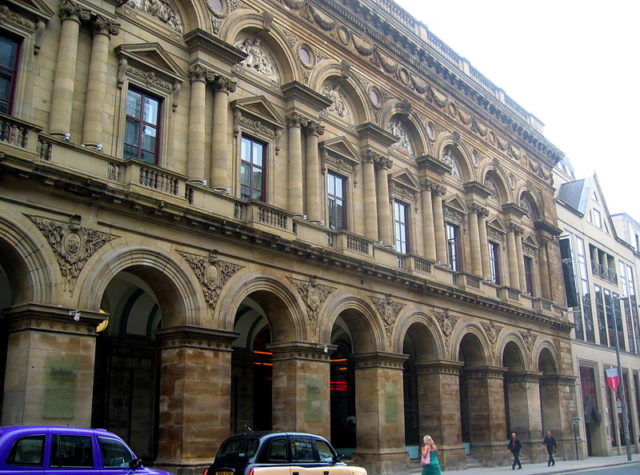
Finally, an application from architect Stephenson Bell that had in mind retaining the original façade and all of the most famous artifacts was accepted.
And in 2004, the Free Trade Hall was transformed into a luxury 263 bedroom hotel. Nonetheless, the heritage of the Free Trade Hall remains intact to this day.
